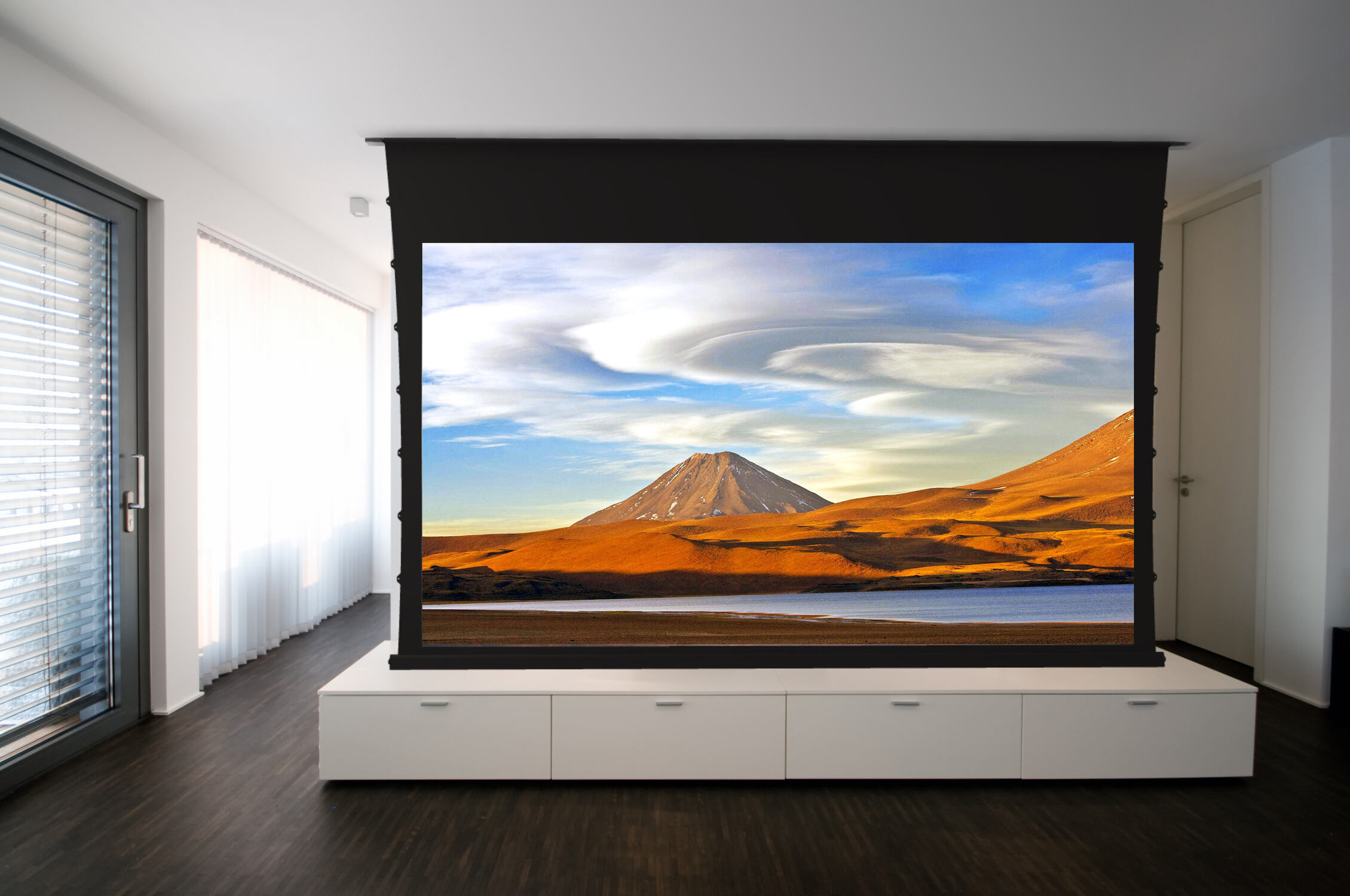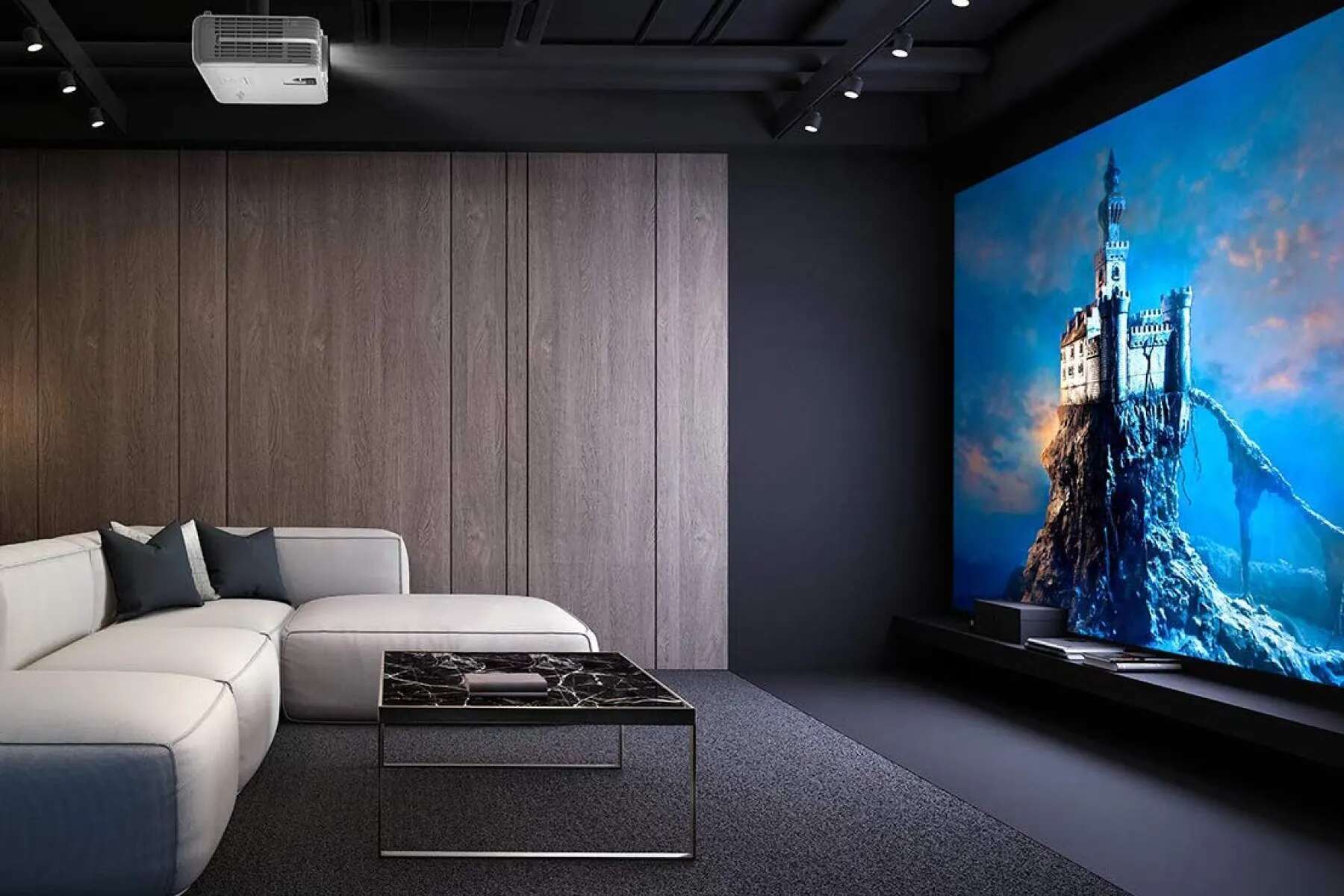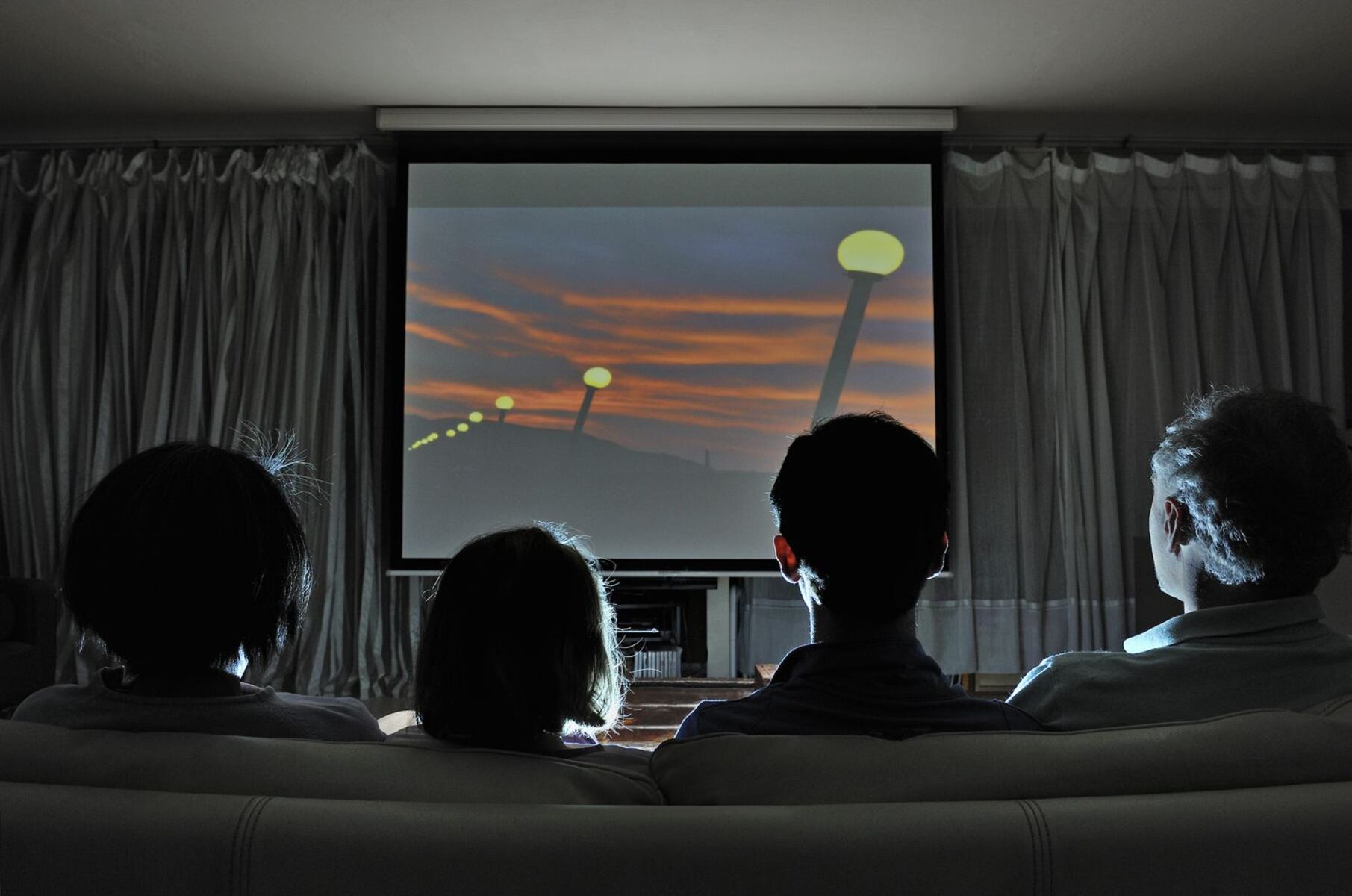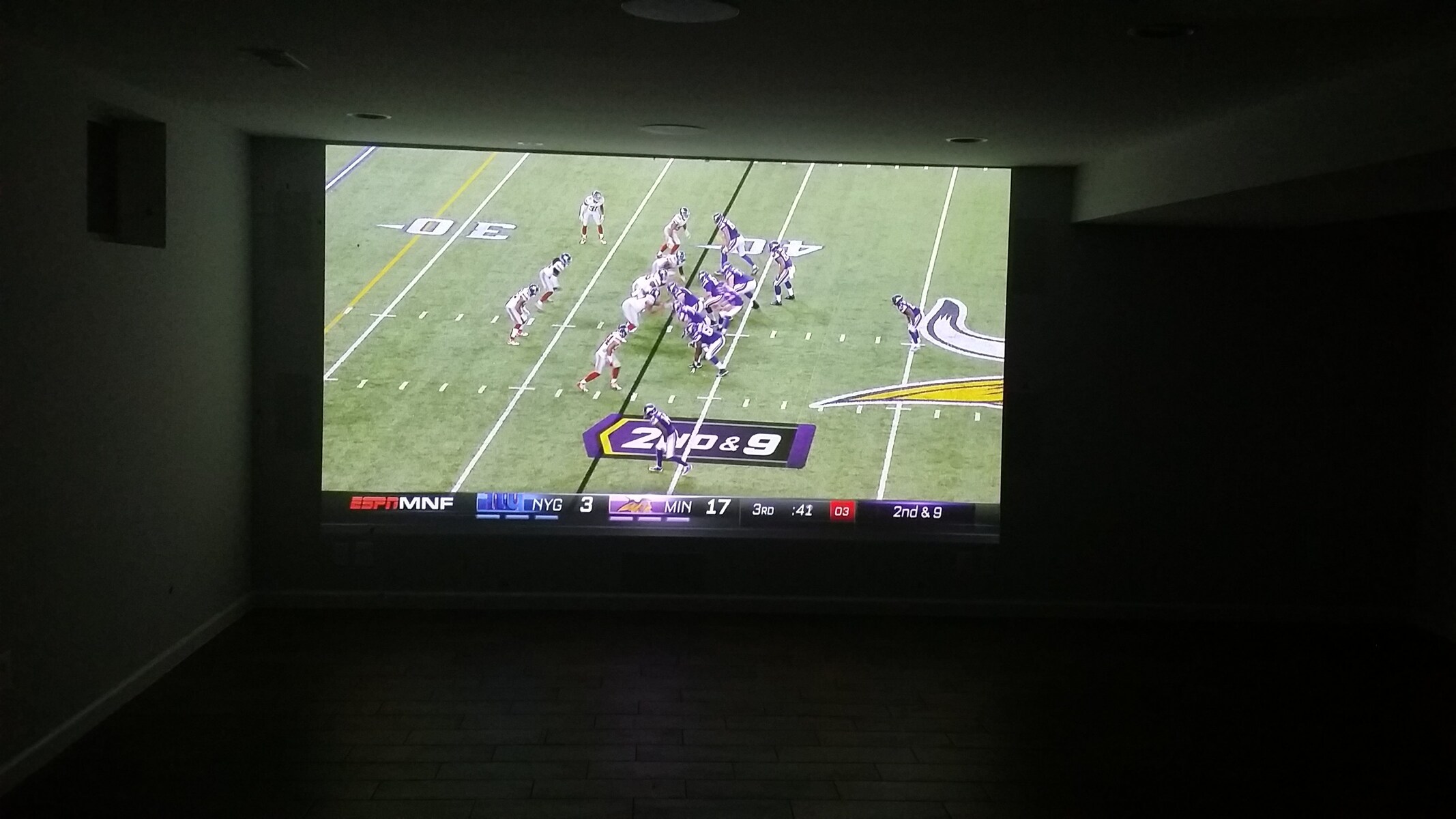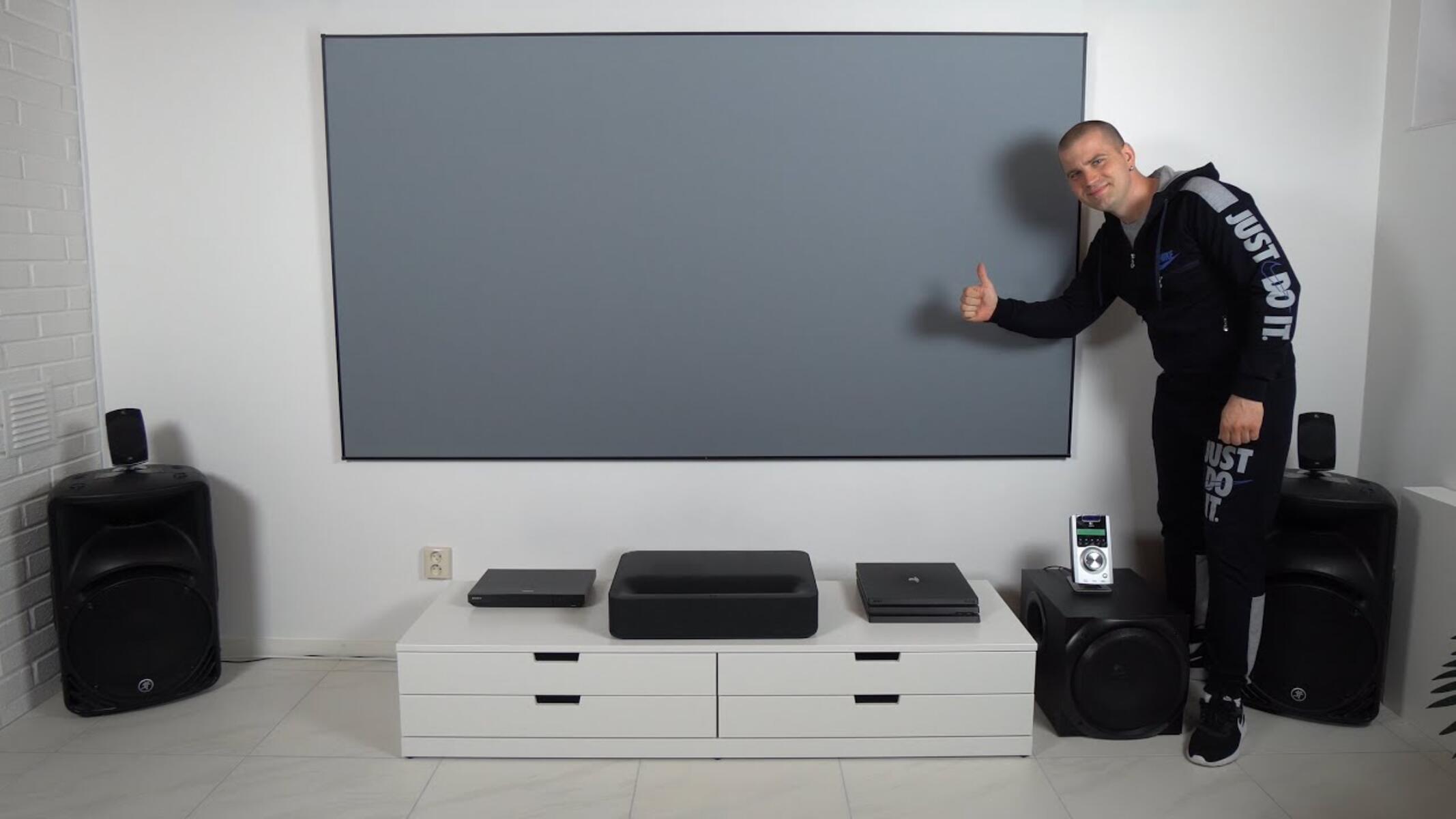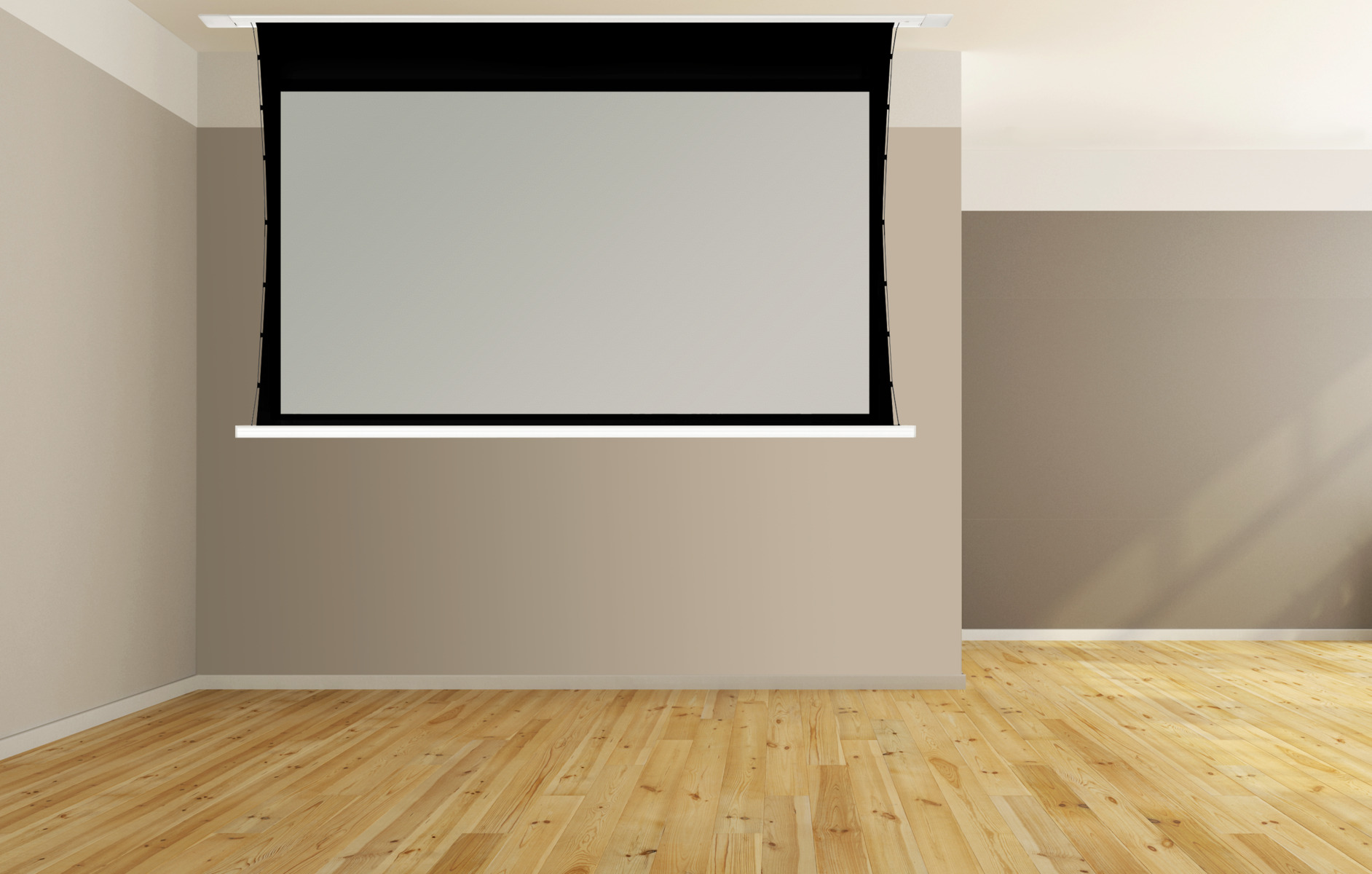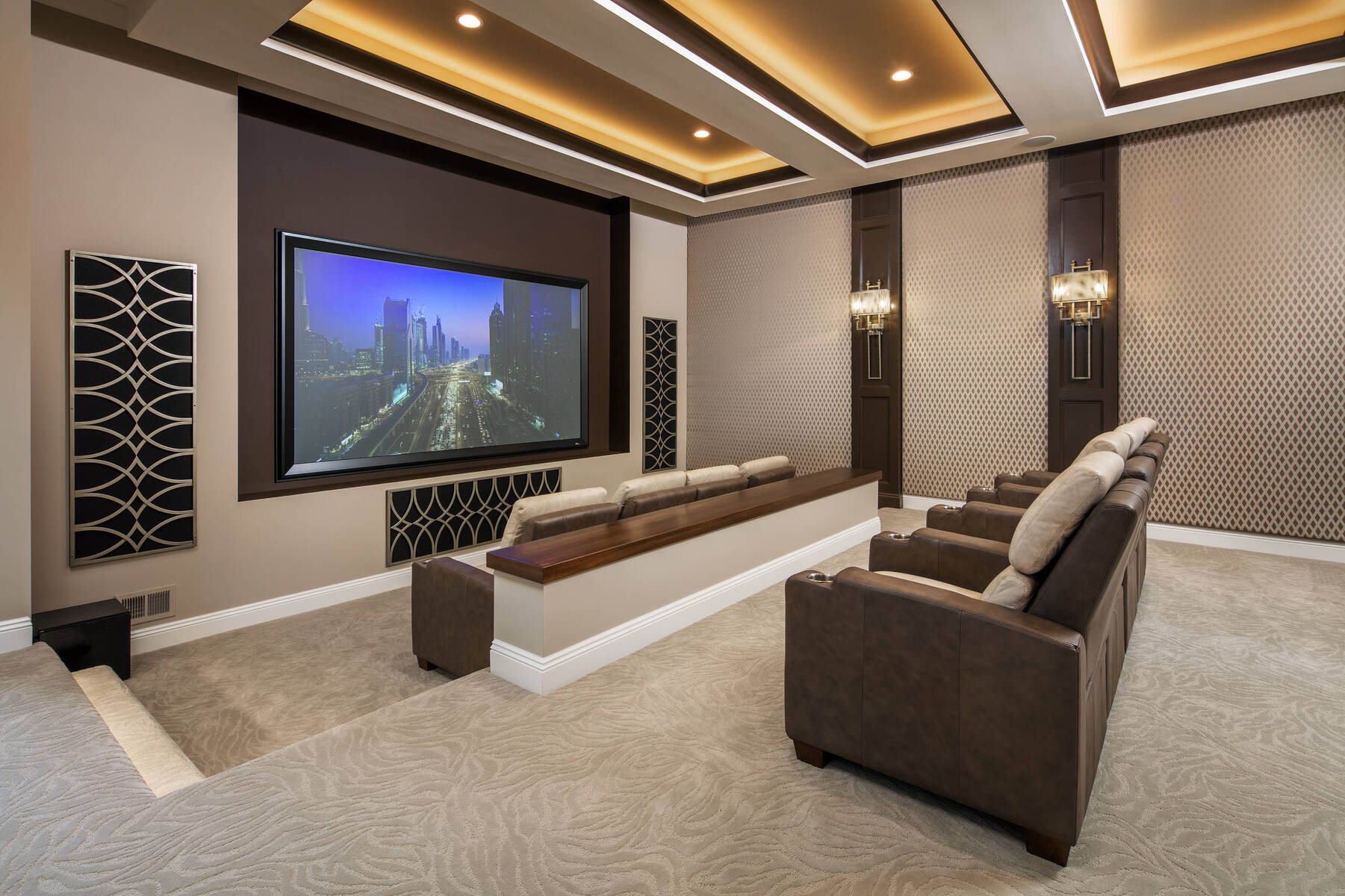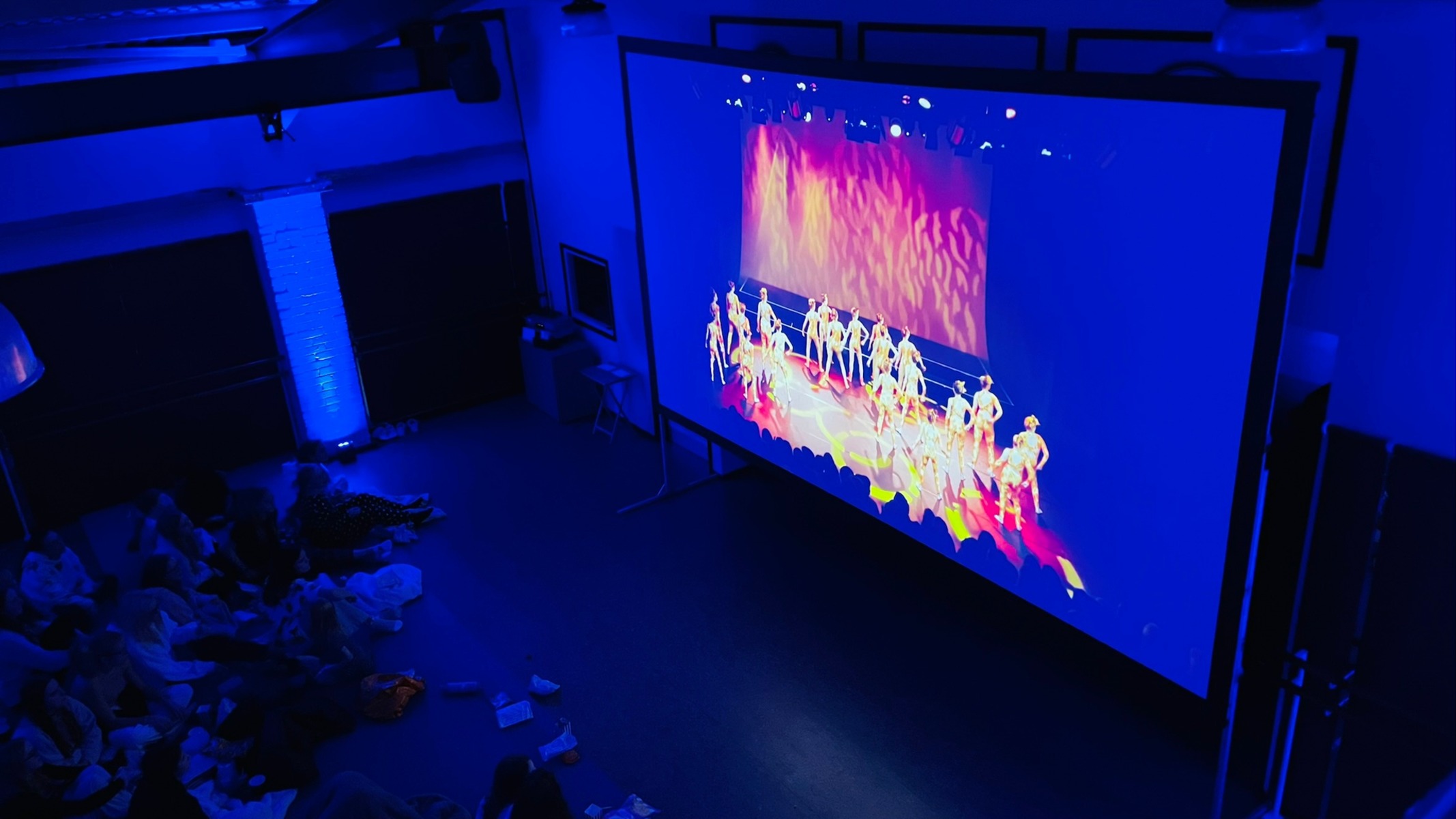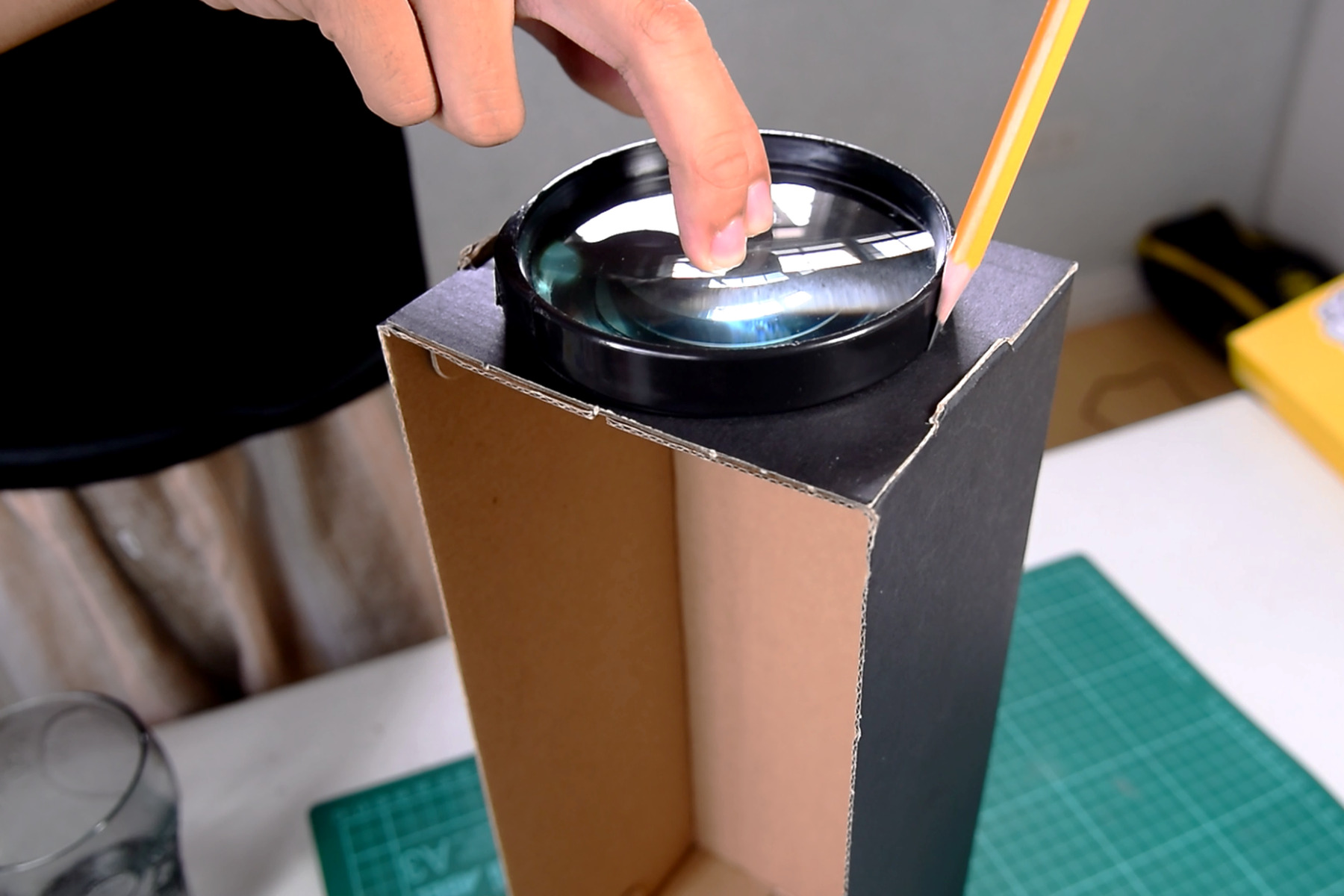Introduction
When setting up a projector, one of the crucial factors to consider is the ideal distance between the projector and the screen. Getting the distance right can greatly impact the viewing experience, ensuring that the image is crisp, clear, and properly scaled on the screen.
But how far should you sit from the projector screen? Is there a standard distance that applies to all projectors?
The truth is, the optimal distance varies depending on several factors, including the type of projector and the size of the room. In this article, we will explore the important considerations when determining the distance between the projector and the screen. We will also provide recommendations for different types of projectors and offer guidance on how to measure and adjust the distance to achieve an optimal viewing experience.
Whether you are setting up a home theater system or preparing for a corporate presentation, understanding the ideal distance from the projector screen is essential for maximizing the visual impact and ensuring that everyone in the audience can comfortably enjoy the content.
So, let’s dive deeper into the factors to consider and the recommended distances for different projector types to help you find the perfect viewing spot.
Factors to Consider when Determining Distance from Projector Screen
There are several important factors to consider when determining the distance between the projector and the screen. By taking these factors into account, you can ensure that the projected image is of high quality and that the viewing experience is optimized for everyone in the audience.
1. Projector Type: Different projector types have varying ideal throw distances. Some projectors are designed for short-throw applications, while others are meant for long-throw setups. Understanding the throw ratio specifications of your projector will help you determine the optimal distance at which the projector should be placed from the screen.
2. Screen Size: The size of the screen is another crucial factor to consider. The larger the screen, the greater the distance required for the projector to properly display the image. It is recommended to consult the projector manufacturer’s guidelines or use an online calculator to determine the appropriate distance based on screen size.
3. Room Size and Layout: The dimensions and layout of the room where the projector will be used should also be taken into consideration. A smaller room may require a shorter throw distance, while a larger room may require a longer throw distance to ensure that the image fills the screen correctly. Additionally, the positioning of furniture and obstructions in the room should be considered to avoid any visual obstruction or shadowing on the screen.
4. Ambient Light: The amount of ambient light in the room can impact the perceived brightness and contrast of the projected image. A darker room allows for a more immersive viewing experience, while a brighter room may require adjustments to the distance or the use of a projector with higher brightness capabilities.
5. Resolution and Image Quality: The native resolution of the projector and the desired image quality should be taken into account when determining the distance. Higher resolutions may require the viewer to sit closer to fully appreciate the details, while lower resolutions may allow for a more relaxed viewing position.
By considering these factors, you can determine the ideal distance between the projector and the screen, ensuring that the image is clear, properly scaled, and optimized for the viewing environment. Next, we will explore the recommended distances for different types of projectors to provide a starting point in your distance calculation.
Recommended Distance for Different Projector Types
While the optimal distance between the projector and the screen depends on various factors, there are general guidelines for different types of projectors that can serve as a starting point when determining the ideal distance.
1. Short-Throw Projectors: Short-throw projectors are designed to be placed close to the screen, making them suitable for smaller spaces. The recommended distance for short-throw projectors is typically between 1 and 4 feet (30-120 cm) from the screen. These projectors provide a large image size without requiring a significant amount of space.
2. Standard Throw Projectors: Standard throw projectors are the most common type and require a moderate amount of space for optimal display. The recommended distance for standard throw projectors is between 4 and 12 feet (120-360 cm) from the screen. This distance allows for a balanced image size and resolution.
3. Long-Throw Projectors: Long-throw projectors are designed for large venues or outdoor setups where the projector must be placed at a considerable distance from the screen. The recommended distance for long-throw projectors is typically more than 12 feet (360 cm) from the screen. These projectors can handle larger screen sizes and provide a bright and clear image even from a distance.
It is important to remember that these recommended distances are not set in stone and can vary depending on the specific model and brand of your projector. Always refer to the manufacturer’s guidelines and specifications for precise distance recommendations.
Additionally, keep in mind that some projectors offer zoom functionality, which allows you to adjust the image size without changing the distance. This can be useful if you have limited space or if you need to accommodate different screen sizes for various events.
Next, we will explore a distance calculation formula that can help you determine the exact distance based on the specifications of your projector and screen size.
Distance Calculation Formula
To calculate the ideal distance between your projector and the screen, you can use a simple distance calculation formula that takes into account the throw ratio of the projector and the desired screen size. The throw ratio is a specification provided by the projector manufacturer and indicates the ratio of the projection distance to the width of the projected image.
The distance calculation formula is as follows:
Distance = Throw Ratio × Screen Width
For example, if the throw ratio of your projector is 1.5 and the width of your screen is 100 inches, the distance can be calculated as:
Distance = 1.5 × 100 = 150 inches (or 12.5 feet)
This formula helps you determine the optimal distance based on the specifications of your projector and the desired screen size. By knowing the throw ratio and the screen width, you can easily calculate the distance at which the projector should be placed for an optimal viewing experience.
Remember to consider any adjustments needed for room size, ambient light, and viewer comfort. In some cases, you may need to adapt the distance slightly to achieve the best results for your specific setup.
Now that you understand the calculation formula, let’s move on to the next section, where we explore how to measure and adjust the distance to ensure an optimal viewing experience.
How to Measure the Ideal Distance
Measuring the ideal distance between the projector and the screen is a crucial step in setting up your projection system. Here are the steps to follow:
1. Determine Screen Size: Measure the width of your screen to determine the screen size. This can be done by measuring the diagonal length or by measuring the width from edge to edge.
2. Find Throw Ratio: Consult the projector’s user manual or specifications to find the throw ratio. The throw ratio is typically expressed as a range (e.g., 1.5-2.0) or as a specific number (e.g., 1.8).
3. Calculate Distance: Use the distance calculation formula mentioned in the previous section (Distance = Throw Ratio × Screen Width) to calculate the recommended distance between the projector and the screen.
4. Mark the Position: Use a tape measure or measuring tape to mark the calculated distance on the floor or any other suitable surface. This will help you position the projector accurately.
5. Adjust as Needed: Depending on the specifics of your room layout, you may need to make slight adjustments to the distance or the positioning of the projector to ensure optimal viewing angles and clear visibility.
By following these steps and taking accurate measurements, you can ensure that the projector is positioned at the optimal distance from the screen for a high-quality and immersive viewing experience.
In the next section, we will discuss how to adjust the distance based on audience size or the environment in which the projection will take place.
Adjusting Distance for Audience Size or Environment
While the recommended distance for your projector and screen setup provides a good starting point, it may need to be adjusted based on the size of your audience or the environment in which the projection will take place. Here are some considerations for making these adjustments:
1. Audience Size: If you expect a larger audience, you may need to adjust the distance to ensure that everyone can comfortably view the projected image. In such cases, you might need to move the projector slightly farther back to accommodate a wider viewing angle. Conversely, if you have a smaller audience or a more intimate setting, you might consider moving the projector closer to the screen to provide a more immersive experience.
2. Space Constraints: Depending on the size and layout of the room, you may have limited space to work with. In such cases, you may need to adjust the distance to fit within the available space. Consider using a short-throw projector or adjusting the zoom functionality to achieve the desired image size while maintaining a suitable projection distance.
3. Ambient Light: The amount of ambient light in the room can impact the visibility of the projected image. If you are projecting in a bright environment, you may need to adjust the distance so that the image appears brighter and clearer. Conversely, in a dimly lit room, you might be able to move the projector slightly closer without sacrificing image quality.
4. Projection Surface: The type of surface on which you are projecting can also affect the distance adjustment. For example, if you are projecting on a reflective surface, you might need to move the projector farther back to avoid hotspots or glare. On the other hand, if you are projecting on a high-gain screen that enhances brightness, you might be able to position the projector slightly closer for optimal viewing.
It is important to note that these adjustments should be made while considering the overall viewing experience and maintaining the image quality. Balancing factors such as brightness, clarity, and audience comfort will help ensure an enjoyable and immersive projection experience.
Now that we have explored the factors to consider when adjusting the distance, let’s move on to the final section, where we discuss other considerations for achieving the optimal viewing distance.
Other Considerations for Optimal Viewing Distance
While determining the ideal distance between the projector and the screen is crucial for a superior viewing experience, there are other factors to consider as well. These considerations will help ensure that the viewing distance is optimized and that viewers can fully enjoy the projected content:
1. Viewing Angle: The viewing angle refers to the angle between the viewer’s line of sight and the center of the screen. For the best visual experience, it is recommended to position the projector at the viewer’s eye level and ensure that the projection angle is perpendicular to the screen. This helps maintain image integrity and reduces any distortion or visual discomfort.
2. Screen Resolution: The resolution of your projector and the content being displayed impact the optimal viewing distance. Higher resolutions, such as 4K or HD, allow for more detailed images and can be viewed from a closer distance without sacrificing clarity. However, lower resolutions may require viewers to sit farther away to avoid pixelation or image quality degradation.
3. Viewer Comfort: Consider the comfort of your viewers when determining the optimal viewing distance. Sitting too close to a large screen can cause eye strain, while sitting too far away may result in diminished immersion. Finding a balance that allows viewers to comfortably see the details of the projected content without straining their eyes is important.
4. Image Aspect Ratio: The aspect ratio of your projected image should be considered when determining the optimal viewing distance. If your content is in a wider aspect ratio, viewers may need to sit closer to fully appreciate the content without any loss of detail. On the other hand, if the content is in a narrower aspect ratio, viewers may need to be farther away to avoid distortions or cropping of the image.
5. Personal Preference: Individual preferences and perception differ, so it’s essential to take into account the preferences of your audience as well. Some viewers may prefer a more immersive experience and choose to sit closer, while others may prefer a more relaxed viewing position and sit farther away. Offering options, such as adjustable seating or allowing viewers to choose their preferred spot, can enhance their overall satisfaction.
Considering these factors will help you achieve the optimal viewing distance for your projected content, ensuring that viewers can fully appreciate the details, colors, and immersion intended by the content creators. Remember to adapt to the specific requirements of each situation and adjust the distance accordingly.
Now that we have explored all the important considerations, let’s wrap up this article with a summary and some final thoughts.
Conclusion
Setting up the ideal distance between your projector and the screen is crucial for optimizing the viewing experience and ensuring that the projected content is displayed with clarity and precision. By considering factors such as the projector type, screen size, room layout, ambient light, and resolution, you can determine the recommended distance as a starting point.
Using the distance calculation formula, you can calculate the exact distance based on the throw ratio and screen width of your projector setup. Adjusting the distance for audience size, space constraints, ambient light conditions, and projection surfaces will help you customize the viewing experience to suit your specific needs.
It is important to consider additional factors like viewing angle, screen resolution, viewer comfort, image aspect ratio, and personal preferences when determining the optimal viewing distance. Taking these into account will ensure that viewers can enjoy the content comfortably and immerse themselves in a high-quality visual experience.
Remember to always consult the manufacturer’s guidelines, test different distances to find the perfect balance, and make any necessary adjustments to achieve an optimal viewing distance for your particular setup.
By paying attention to these considerations and finding the right distance for your projector and screen, you can create a truly immersive and visually delightful experience for yourself and your audience. So, go ahead and optimize your projection setup for the best possible viewing distance and enjoy an impressive display of your favorite movies, presentations, and multimedia content.







